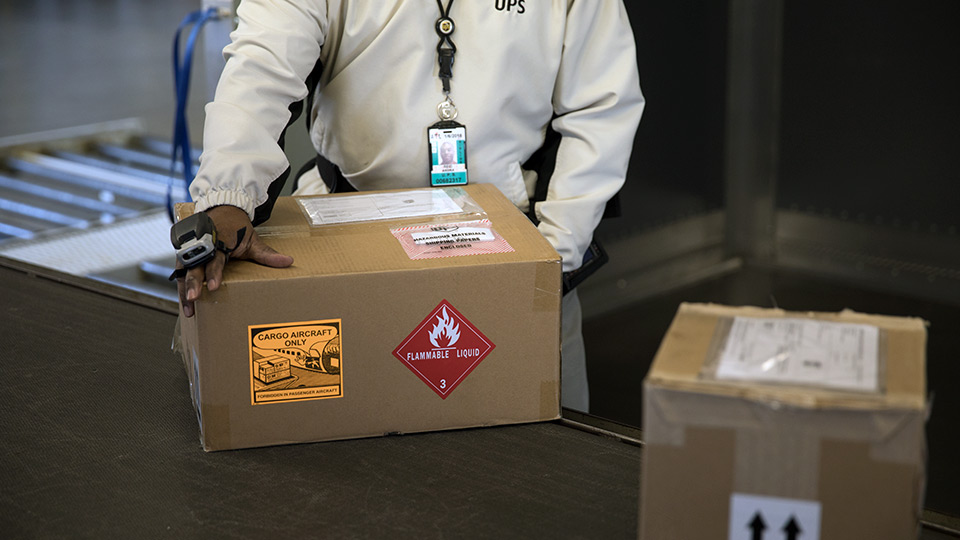Shipping Dangerous Goods
Types of Dangerous Goods and Commodities
Learn MoreInternational Dangerous Goods Chemical Tables
Learn MoreDangerous goods packages must be prepared in accordance with ADR regulations for ground shipments and IATA regulations for air shipments. Shippers must make certain a package is correctly marked, packaged, labeled and documented.
Note: Preparing dangerous goods for transport by aircraft usually requires compliance with more stringent regulations than for ground transport. For example, for air shipment, packages containing liquids must satisfy a pressure differential test specified in the IATA Dangerous Goods Regulations. Each dangerous goods package must also have the required IATA Shippers Declaration for Dangerous Goods.
Effective 1 January 2020, all manufacturers and distributors of cells, batteries and equipment powered by cells and batteries manufactured after 30 June 2003 are required to make available a test summary as specified in the UN Manual of Tests and Criteria.
Distributors and shippers are not required to provide printed copies of the test summary with each consignment containing lithium batteries, and are encouraged to make it available using technology, for example, by listing it on the company’s website.
For more information on IATA regulations, please visit the IATA website or contact your local account executive or customer service representative.
Dangerous Goods regulations are subject to change on a regular basis.
UPS works with third party dangerous goods software vendors. The following vendor list offers preparation modules for the IATA Shipper´s Declaration for dangerous goods. These programs work in conjunction with WorldShip.
- Dangerous Goods Council
- Hazmat Software, LLC©
- Labelmaster
- QAD Precision
The European Agreement concerning the International Carriage of Dangerous Goods by Road is known as ADR. Countries that have signed the ADR agreement are required to comply with the regulations for transporting dangerous goods on the ground in Europe. UPS operates in accordance with the provisions of section 1.1.3.6.
Note: ADR applies only to dangerous goods shipments in Europe. See "UPS International Dangerous Goods Countries/Territories," below.
Dry ice can be shipped in the UPS air and ground networks domestically and internationally. Shipping dry ice with UPS may not require a dangerous goods contract or dangerous goods shipping papers if the contents being cooled are not subject to full dangerous goods regulation. However, dry ice shipping does require an agreement under UPS's International Special Commodities (ISC) program. Packages must display appropriate information on the UPS address label, as well as correct marking and labeling. If dry ice is used to refrigerate dangerous goods, then a dangerous goods contract is required.


